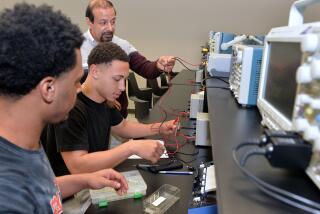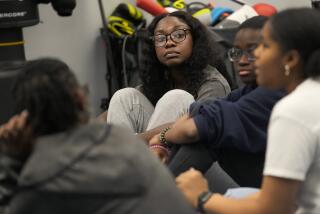OC HIGH / STUDENT NEWS AND...
The key to finding the right college and gaining admission to it is to plan ahead, stay organized and keep on schedule, say those who have succeeded in the process.
When should you start? Right now if you’re a member of the Class of ’96.
Here are some of the steps college-bound juniors should take in the coming months and through their senior year. It is a methodical process, starting with a broad look and eventually focusing in on a few schools. Keep separate files on each school in which you are interested.
Junior Year
JULY/AUGUST
* Start writing for college brochures
* Visit a few prospective campuses
* Consider taking an SAT preparation course or start preparing on your own
* Take advantage of a scholarship and/or career search at your local college/career planning center
* Start looking into scholarship opportunities
* Start a filing system for prospective colleges and scholarships.
Starting now helps you know early on what you’re up against. You’ll be thankful in the end that you got a head start on the college game.
SEPTEMBER
* Inquire/sign up for the October PSAT/NMSQT. Taking the PSAT can be good practice for the SAT even though their formats differ in length and difficulty.
* Meet with a high school guidance counselor to review current course load and plan for senior year. It is important to plan your academic schedule to meet the requirements for graduation and eligibility for college admission. Check individual colleges for special requirements.
OCTOBER
* Take PSAT/NMSQT
DECEMBER
* Visit college campuses. Take campus tours, stay overnight, talk to admission counselors. Winter break is a good time to check out some of the schools. Visiting campuses may help determine, among other things, if you will go away to college or commute from home. It will also help you tell if the community and campus are places where you would be comfortable spending four years.
JANUARY
* Sign up for April SAT
MARCH
* Write to any additional colleges
* Sign up for May/June ACH or April ACT
APRIL
* Take SAT or ACT
* Begin narrowing down your list of colleges.
It’s good to have options when choosing a college, but having too many schools to choose from can become a problem. It would be wiser to narrow the choice to a reasonable number--which will make researching and applying easier. If you don’t narrow your options, you may find you don’t have time to really get to know any schools ahead of time.
MAY
* Attend a college fair (usually held at high schools)
* Take Advanced Placement exams (if appropriate)
* Take ACH (if appropriate)
* Consider enrolling in a class at a local college, pursuing a summer school program at home or away, taking an SAT prep course if you haven’t already.
Stay on track in your quest, but don’t let your college goals become your motives for everything you do. It is just as important to do the things that you enjoy.
In addition to academics, colleges often take note of varied interests and community service in evaluating applications. Many want students who are well-rounded and willing to give something back to the community.
JUNE
* Plan additional college visits in the summer
* Take ACH (if appropriate)
JULY/AUGUST
* Visit colleges
* Continue to narrow choices
* Write for application forms
Senior Year
SEPTEMBER
* Sign up for November SAT or October ACT
* Review your personal records with a guidance counselor to ensure accuracy
* Request additional applications
* Make plans to visit colleges if you haven’t gotten to them
* Continue scholarship search--there are many possibilities from federal, state and private sources.
Remember that you’re not alone in the ordeal called college preparation. If you have any questions or worries, don’t hesitate to talk to a school guidance counselor or a college admissions counselor--or even an undergraduate who has already been through the process.
OCTOBER
* Attend a regional college fair. They are usually announced at school and in newspapers.
* Request teacher recommendations. Provide a sheet with your personal interests, goals and academic background for teachers to use in preparing letters on your behalf.
* Begin sending in completed applications for schools you know you are interested in and for those that have early deadlines. Keep copies of everything you send.
* Sign up for December/January ACH or December ACT
* Take ACT (if appropriate)
It is very important to make and keep copies of all your application forms in your personal records. It helps you keep track of where you are in the process and, if you’ve made an error that you discover later, you will be able to send corrected information. Also, documents can be lost, either in the mail or during the reviewing process at the school. It’s better to be safe than sorry; imagine having to reconstruct an application from scratch.
NOVEMBER
* Take SAT (if appropriate)
* Continue filing applications
* Obtain the free application for federal student aid and/or the financial aid form if appropriate
DECEMBER
* Take SAT or ACH or ACT
* Expect to hear from early decision schools
JANUARY
* Request transcript to be sent of first-semester grades (if appropriate)
* Take ACH test (if appropriate)
APRIL
* Decide on college and send in tuition deposit
* Notify other colleges of selection
MAY
* Take Advanced Placement exams (if appropriate)
* Send final transcript
* Look into housing, orientation course selection, etc., at the campus of choice
More to Read
Sign up for Essential California
The most important California stories and recommendations in your inbox every morning.
You may occasionally receive promotional content from the Los Angeles Times.










